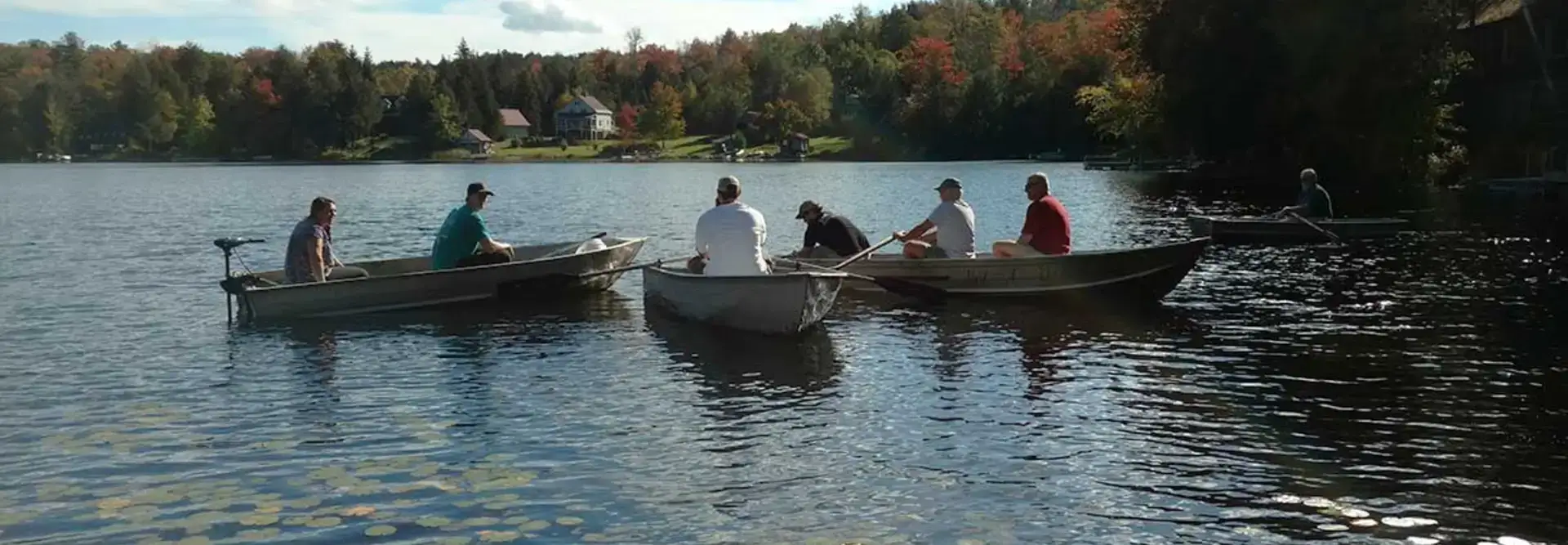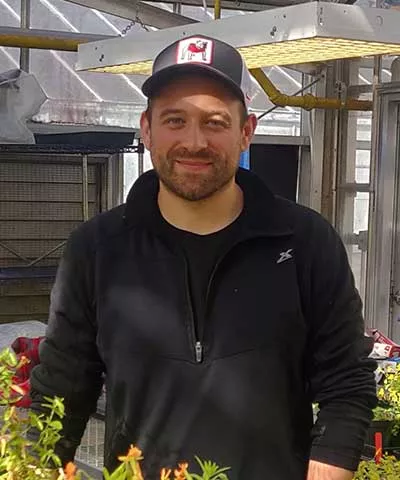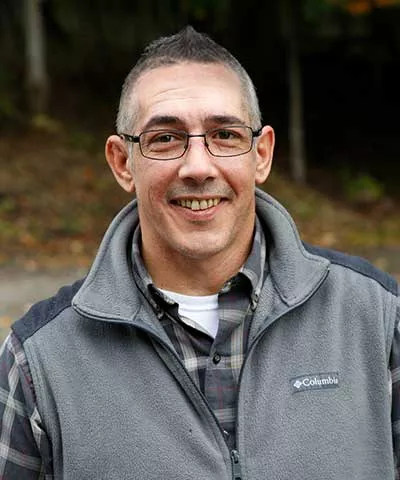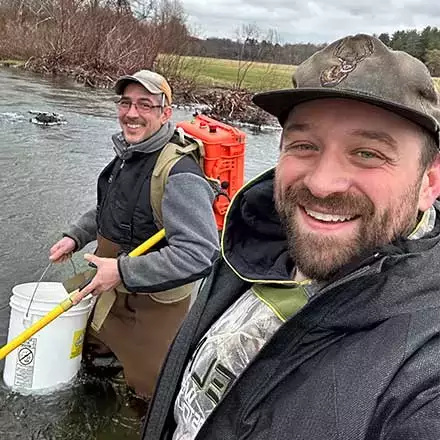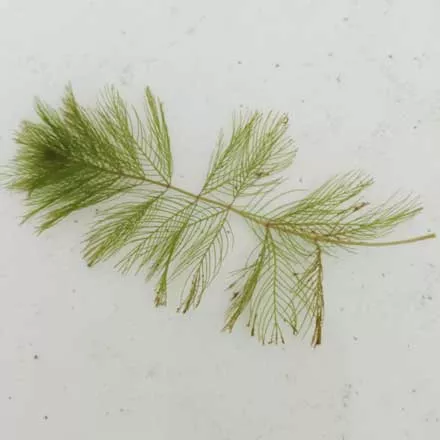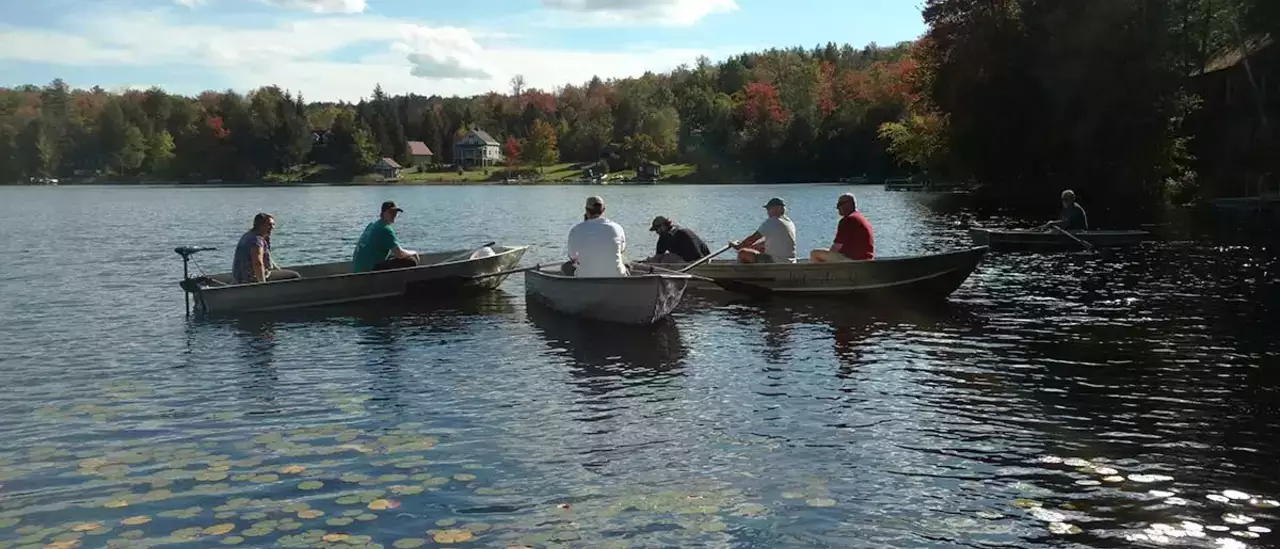A grant of nearly a quarter of a million dollars will let SUNY Oneonta Biology faculty and students conduct research on an invasive species that has become a widespread problem in the Lake Champlain Basin, an area covering 8,234 square miles in New York, Vermont and Quebec.
Assistant Professor Alex Sotola and Associate Professor Dan Stich will use the $240,000 grant, provided by the Lake Champlain Basin Program (LCBP), to study the invasive Eurasian watermilfoil, an aquatic plant with long, feathery leaves that grows in lakes and streams. While some watermilfoil are native and beneficial to the ecosystem, invasive species such as Eurasian watermilfoil can cause major problems by crowding out native plants and disrupting the balance of the ecosystem.
Recognizing the pressing need for deeper scientific understanding of the issue and effective management strategies, Sotola and Stich submitted their grant proposal, which was approved this spring. The project will start in 2024.
Getting Students Involved
Sotola and Stich will work with two graduate students in SUNY Oneonta’s M.S. Biology program and several undergraduate students to collect samples from as many waterbodies within the Lake Champlain Basin as possible. These samples will help them assess the genetic and phenotypic variation within and between members of the Myriophyllum genus and their impacts on native plant communities to aid in management and conservation practices.
“This research is very important for a few different reasons,” Sotola said. “It will allow us to assess hybridization, which has conservation and management implications, and it will help us learn how effective treatments are and if they are impacting native species in any way. Getting students involved will be an amazing educational experience for them, as well, and will hopefully propel them into their next stop after graduating from SUNY Oneonta.”
Stich added that “the skills students learn in the field, in the laboratory, and through data analysis in this project such as invasive species identification, genome-wide sequencing, and occupancy modeling are in high demand and likely will be into the foreseeable future.”
Understanding a Big Problem
First discovered in the United States in the 1940s, Eurasian watermilfoil has spread across the country and has been shown to degrade water quality, negatively influence native plant communities, and drastically influence recreational and economic values of the invaded waterbodies.
The Lake Champlain Watershed drains the area between the Adirondack Mountains in northeastern New York and the Green Mountains in northwestern Vermont. According to the Lake Champlain Sea Grant program, the Vermont and New York portions of the Lake Champlain Basin are home to nearly 500,000 people, with another 100,000 people in the Canadian portions.
"Many people who live in the Lake Champlain Basin are dependent on the lake for jobs, recreation, and quality of life," the program's website reads. "People from around the world visit the lake and basin to enjoy its cultural and military history, abundant biological resources, and opportunities for recreation."
Sotola and Stich will share their findings not only with conservation and management organizations, but also with public communities and groups within the Lake Champlain Basin, with the goal of improving overall understanding of invasive species impacts on the Lake Champlain ecosystem.
